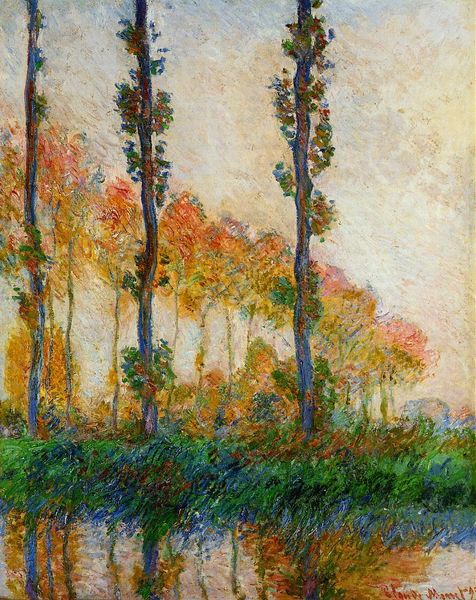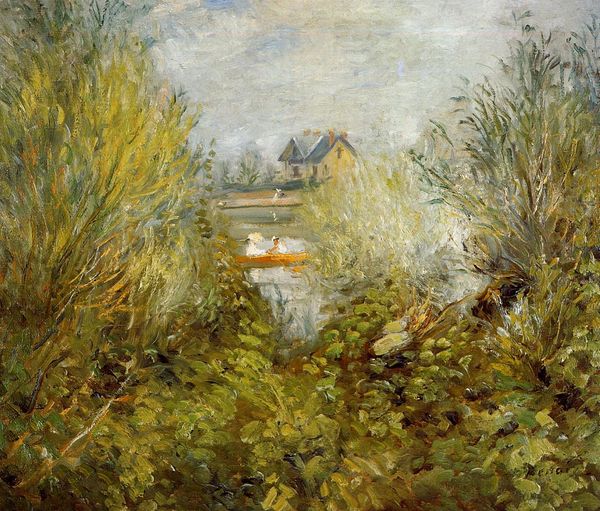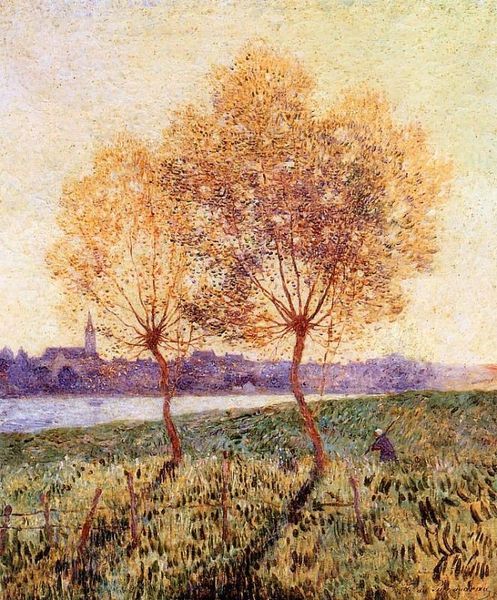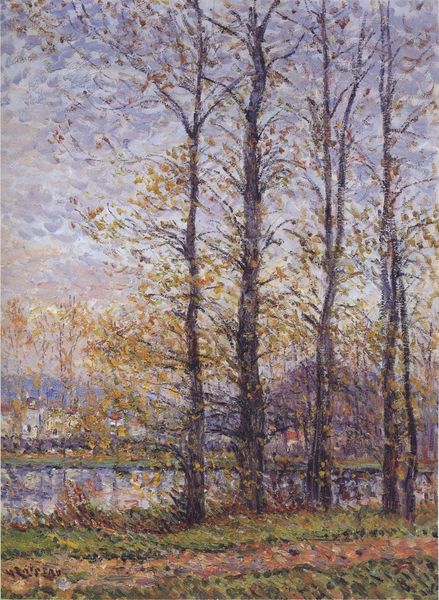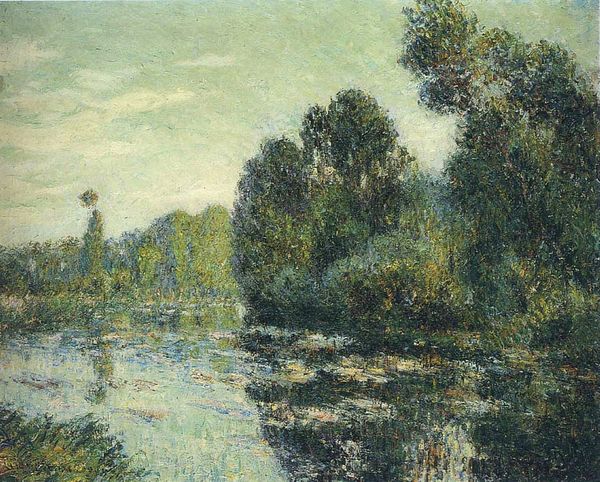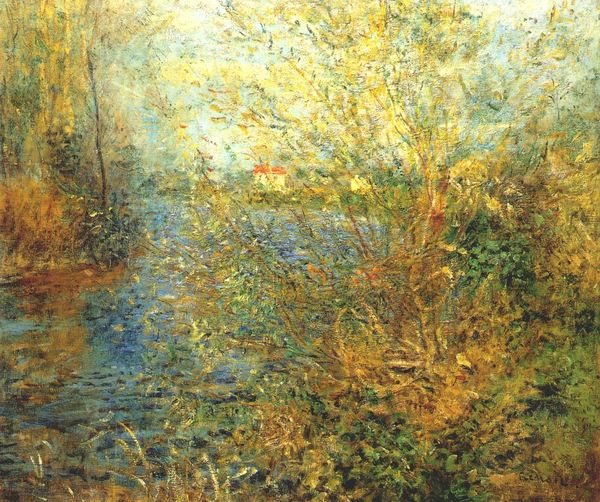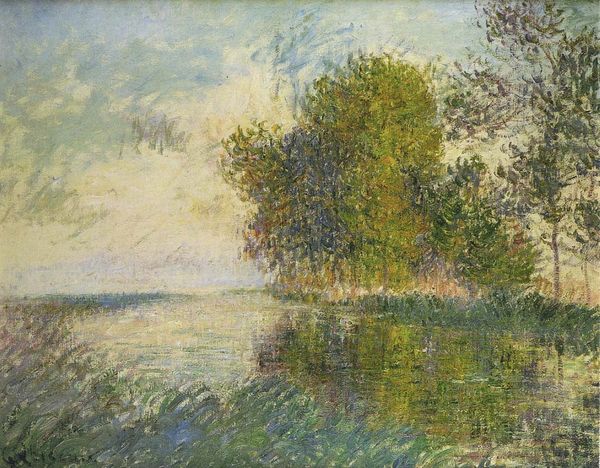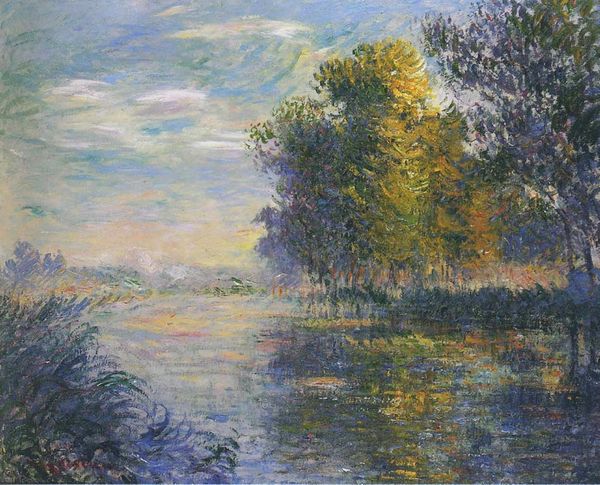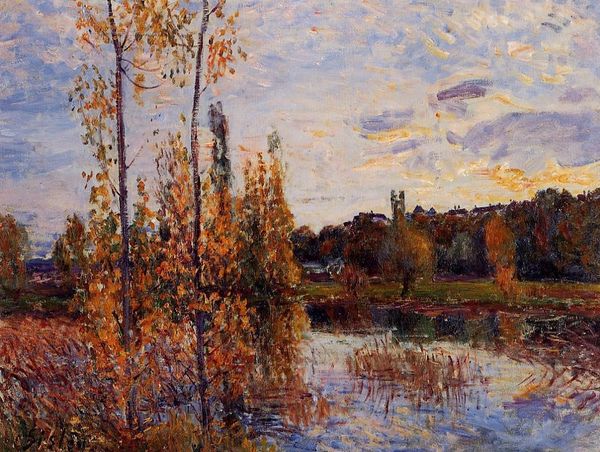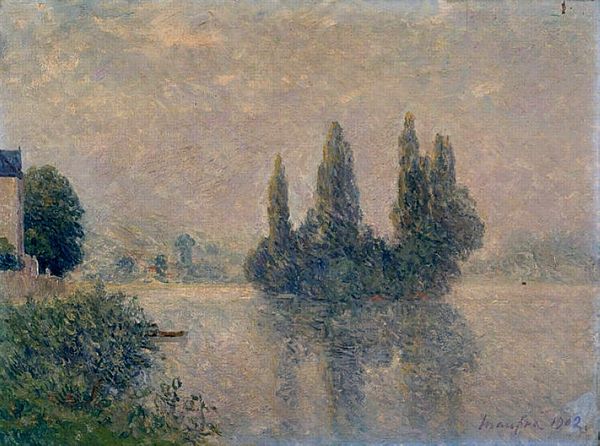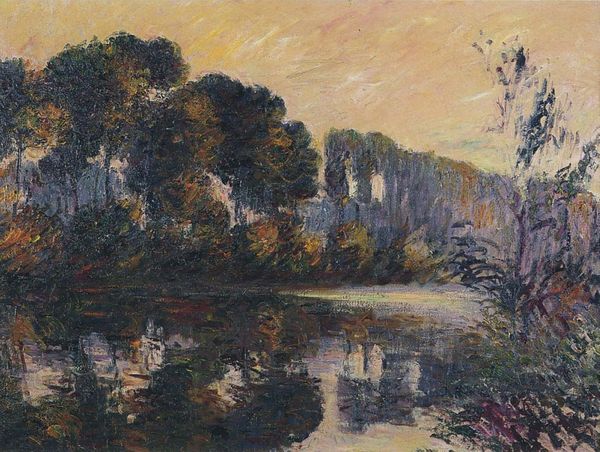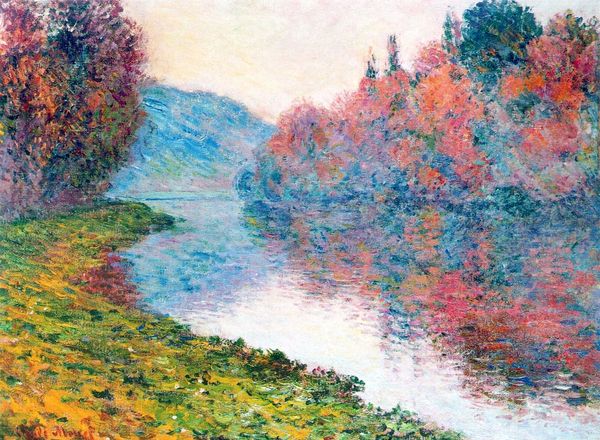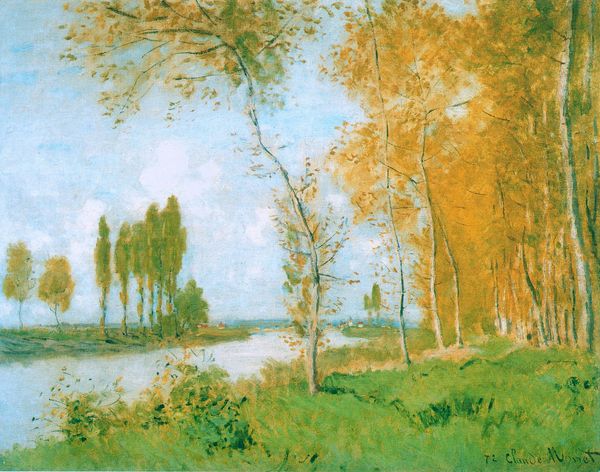
Copyright: Public domain
Editor: This is Childe Hassam's "Late Afternoon," sometimes called "Sunset," painted in 1903. It's an oil painting, done *en plein air* it seems. The overall effect is so soft and dreamlike, like a memory. What symbols or visual echoes do you see in this painting? Curator: Immediately, I’m struck by the water’s surface mirroring the sun – a classical motif suggesting the interconnection between the earthly and celestial realms, the conscious and unconscious. Hassam wasn’t merely capturing a sunset; he was invoking the symbolic language of light and reflection. Do you notice the trees? Editor: Yes, they're reaching toward the light. It's very evocative. Curator: Indeed. Trees often symbolize growth, stability, and a connection to one’s roots. In this context, and coupled with the title, the setting sun could symbolize the passage of time, the end of a cycle, or perhaps a sense of nostalgia. How does the small boat by the shore speak to you? Editor: It looks abandoned almost, like a journey’s end. Maybe it’s about aging? Curator: Potentially. The boat as a vessel, whether setting out or at rest, implies movement, transition. Here, nestled by the shore, it perhaps echoes the ending of a journey, the close of a chapter. This sunset and its hazy glow speak volumes beyond a simple landscape. Think also how this era reflected anxieties about urbanization and industrialization, thus finding solace in the natural world becomes a powerful symbol of remembrance of a more peaceful world. Editor: I see the painting differently now, it seems less like just a pretty landscape, and more about cultural feelings and memory. Curator: Precisely. And in that way, its impression lingers long after the sun has set.
Comments
No comments
Be the first to comment and join the conversation on the ultimate creative platform.
